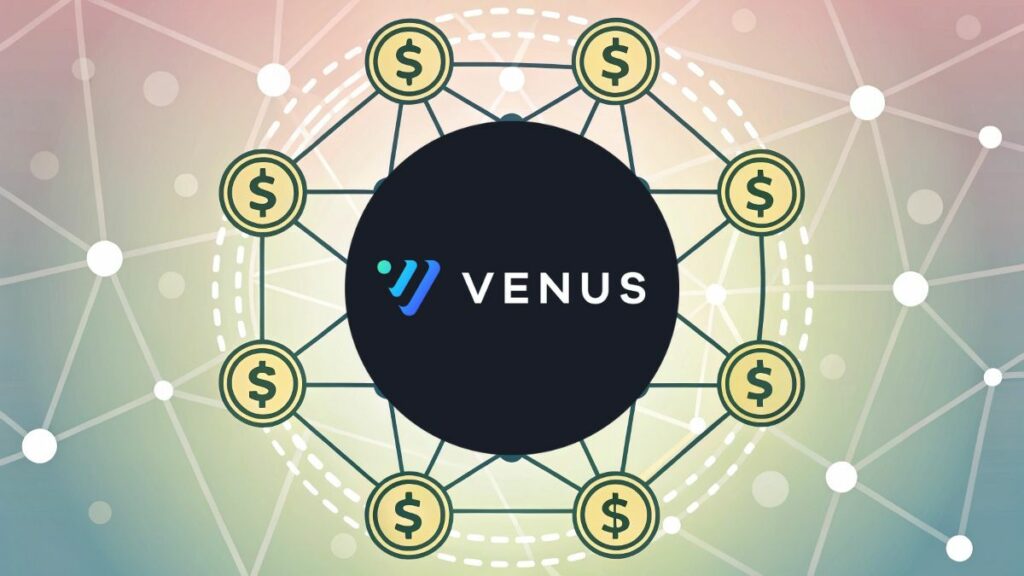Venus Protocol revolutionizes decentralized finance by creating an accessible ecosystem for crypto asset utilization. This innovative platform enables users to maximize capital efficiency through integrated financial services, operating entirely on-chain without traditional intermediaries.
What is the Venus Protocol?

Venus Protocol is a decentralized algorithmic money market platform that facilitates permissionless lending and borrowing of cryptocurrencies. Established in 2020 by the creators of the crypto debit card provider Swipe, it was first introduced on the BNB Chain to take advantage of its low transaction costs and fast transaction speeds.
The protocol removes middlemen like banks by automating tasks with verified smart contracts, enabling users globally to connect directly using Web3 wallets like MetaMask.
Foundational Vision and Community Control
Venus Protocol emerged to bridge traditional financial services with DeFi, offering an alternative to Ethereum-based protocols plagued by high gas costs and scalability issues.
Its native governance token, XVS, ensures community ownership: no tokens were pre-mined for founders, granting holders full control over the protocol’s evolution. This community-driven model allows decentralized decision-making for upgrades, asset listings, and risk parameters.
Dual-Function Differentiation
In contrast to independent lending platforms, Venus Protocol stands out by combining two essential DeFi services:
- Lending/Borrowing Pools: Users supply assets (e.g., BTC, ETH, stablecoins) to earn variable interest or borrow against collateral.
- Synthetic Stablecoin Minting: Users mint VAI, an algorithmic stablecoin pegged to USD, by over-collateralizing positions (e.g., borrowing up to 50% of deposited collateral value). This dual approach unlocks liquidity without requiring asset sales.
Governance and Expansion
Governed by a decentralized autonomous organization (Venus DAO), the protocol employs three sub-DAOs for development, treasury management, and community growth. Venus expanded into a multichain ecosystem, deploying across Ethereum, Arbitrum, zkSync, and other networks. This broadened its reach, amassing an impressive TVL and cementing its role as a top-five lending protocol in DeFi.
How Does Venus Protocol Work?

Venus Protocol automatically changes interest rates through algorithms that consider the current supply and demand for every asset. Lenders earn variable yields automatically calculated by smart contracts, while borrowers pay interest that fluctuates with market conditions.
Rates rise during high borrowing demand to incentivize more lending and fall when liquidity is abundant. This model ensures efficient capital utilization without manual intervention.
Over-Collateralization and Liquidation
To borrow assets, users must deposit collateral exceeding the loan value, governed by asset-specific Collateral Factors (e.g., 75% for BTC). If a collateral’s value drops, triggering a Liquidation Threshold, liquidators repay portions of the debt in exchange for discounted collateral. This mechanism protects the protocol from undercollateralized positions, with borrowers incurring a Liquidation Penalty.
Synthetic Stablecoin Generation
Users generate the native stablecoin VAI by over-collateralizing supported assets. The minting process calculates borrowing power against deposited collateral, allowing VAI creation up to a predetermined ratio (e.g., 50%). VAI maintains its USD peg algorithmically through protocol incentives and can be repaid anytime to reclaim collateral.
Governance-Driven Parameter Control
XVS token holders govern critical operational parameters via decentralized voting. This includes setting:
- Collateral Factors for each asset
- Liquidation thresholds and penalties
- Interest rate curve algorithms
- VAI minting ratios
- Continuous adjustments by the community optimize protocol security and efficiency.
What is the XVS Token?

Governance and Protocol Control
XVS serves as the primary governance token for the Venus Protocol, empowering holders to participate in voting on significant decisions. With a decentralized governance system, XVS holders can suggest and vote on Venus Improvement Proposals (VIPs), which determine upgrades, new collateral, changes to risk parameters, and how the treasury is managed. This structure ensures the community-led evolution of the protocol, aligning development with stakeholder interests.
Staking and Yield Generation
In addition to governance, XVS allows users to earn yields by staking in the protocol’s vault. Users have the option to lock their tokens in exchange for variable interest, promoting long-term engagement. Staking XVS also increases voting power in proportion, providing a twofold advantage: earning passive income and gaining more influence over protocol decisions. Future initiatives like Venus Prime will further reward stakers with protocol revenue, adding utility beyond basic yield mechanisms.
Tokenomics and Distribution
XVS has a fixed maximum supply of 30 million tokens, with approximately 16.4 million in circulation. Initial distribution allocated 20% to Binance Launchpool participants, 1% to Binance Smart Chain grants, and 79% to Venus liquidity providers over four years. This capped supply acts as an anti-inflationary safeguard, while ongoing rewards depend on community-controlled emissions. The token’s value is intrinsically tied to protocol adoption, with metrics like Total Value Locked reflecting ecosystem health.
Is the XVS Token a Good Investment?
Investment viability hinges on multiple factors:
- Utility-Driven Demand: XVS derives value from governance rights, staking yields, and upcoming features like Venus Prime, which may boost demand through revenue-sharing.
- Market Position: Despite its $93 million market cap, XVS trades 96% below its all-time high, reflecting volatility but also potential upside if DeFi adoption surges.
- Risks: Regulatory uncertainty, competition from rival lending protocols, and reliance on Binance Smart Chain’s security pose challenges. Technical indicators show neutral sentiment, with mixed price predictions.
- Ultimately, XVS suits investors bullish on Venus Protocol’s ability to innovate in algorithmic lending and stablecoin minting, though its performance remains tethered to broader crypto market trends.
What Makes the Venus Protocol Stand Out?

Hybrid Model with Advanced Risk Management
Venus uniquely integrates algorithmic money markets with synthetic stablecoin minting within a single protocol, enabling users to simultaneously lend, borrow, and generate VAI stablecoins using the same collateral, eliminating the need to move assets between platforms.
Its pioneering isolated pools segregate assets into custom risk compartments, preventing contagion if one pool fails. This is reinforced by a multi-oracle price-feed system that fetches and cross-validates real-time data from diverse sources, slashing vulnerability to manipulation or stale pricing.
Governance Agility and Capital Efficiency
Unlike conventional DeFi governance, Venus employs fast-track Venus Improvement Proposals (VIPs) with role-based access controls, enabling rapid response to market shifts without full DAO delays. Borrowers access loans at negative interest rates in seconds, bypassing credit checks, and enjoy flexible repayment timelines without fixed schedules.
Conclusion
Venus Protocol pioneers accessible DeFi solutions by merging lending markets with synthetic stablecoin minting, governed entirely by its community. Its isolated pools and multi-layered risk systems safeguard users while enabling capital efficiency unmatched by traditional finance.
By eliminating intermediaries and credit checks, Venus unlocks borderless financial opportunities, positioning itself as a cornerstone of decentralized economic infrastructure. The protocol’s agility and innovation continue to drive broader crypto adoption globally.










